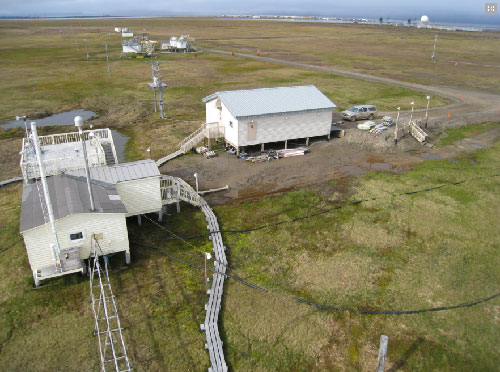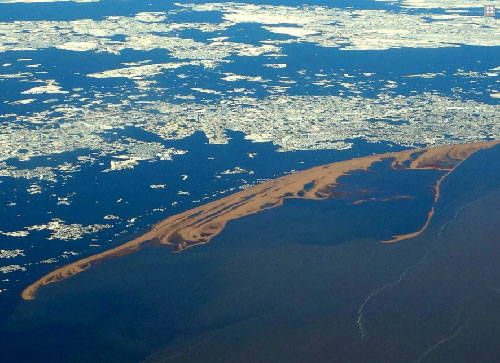
Recording climate change from the top of the world
August 31 2015
“Scientists from NOAA have long monitored changes in the northern Alaskan climate, giving them a front row seat on climate change, which is happening faster here than on much of the planet,” said Diane Stanitski, a physical scientist with NOAA’s Earth System Research Laboratory Global Monitoring Division. “In recent years, NOAA has been working more closely with other scientists who look at how other parts of the natural environment and people are affected by changes in ice, snow and temperature in America’s northernmost community.”
Scientists at NOAA’s Barrow Observatory have been taking longterm measurements for several decades of temperature, solar radiation, snow and permafrost at this observatory just outside Barrow, Alaska.
Ice prediction would save lives Craig George, who works for the North Slope Borough, started looking at when ice disappeared from Isaktoak and Elson lagoons so he could plan the borough’s wildlife research long before climate change made the information vital to community safety.
Aerial view of Cooper Island
Bird's eye view of changing climate George Divoky, who began studying the black guillemots for the Smithsonian Institution in 1972, said he has found his long time data series on the bird helps people understand climate change. “While I’m personally more taken with the physical data showing declining sea ice and increased warming, people need to have a story they can relate to and this bird provides that narrative.” The birds winter on pack ice and lay their eggs on Cooper Island near Barrow. They now have a much longer snow-free season to lay their eggs, but they are also suffering a loss of abundant food as the edge of the sea ice continues to move farther north and with it Arctic cod, key food for black guillemots as well as the ice seals that are prey of polar bears. NOAA records decline in solar reflectivity Robert Stone, who recently retired from the University of Colorado's Cooperative Institute for Research in Environmental Sciences in Boulder, Colorado, established another valuable time series of data collected at the Barrow Observatory. He used longterm measurements of incoming and reflected sunlight to show that, due to earlier snow melt in spring, more solar radiation is being absorbed by the surface at the Barrow Observatory. Prior to the annual snow melt, about 85 percent of the sunlight received at the surface is reflected back to space, but after the snow melts about 80 percent of the sun’s energy is absorbed by bare tundra, and more than 90 percent is absorbed by the ocean surface after the sea ice melts. Declining snow and ice results in increased solar absorption that, in turn, accelerates melting and warming. "Barrow and other Arctic communities need to know when snow and ice will disappear to make decisions about transportation as well as when and where to hunt for caribou or harvest whales,” said Stone. “Understanding the factors that underlie the observed longterm changes can provide the foundation to build a predictive tool that could help Arctic communities better plan for the significant challenges of the future.”
Edited by Mary Kauffman, SitNews
Source of News:
|
||

